Reflection
Reflection is the change in direction of a wavefront at an interface between two different media so that the wavefront returns into the medium from which it originated. This phenomenon occurs with all types of waves, including electromagnetic radiation such as light, as well as sound and water waves.
Types of Reflection
There are two main types of reflection: regular reflection and diffuse reflection.
- Regular Reflection: Occurs when a wave is reflected at a smooth, flat surface, such as a mirror, and the angle of incidence is equal to the angle of reflection.
- Diffuse Reflection: Occurs when a wave is reflected at a rough or uneven surface, such as a wall, and the reflected waves are scattered in different directions.
Law of Reflection
The law of reflection states that the angle of incidence is equal to the angle of reflection. This means that when a wave, such as light, strikes a surface, the angle at which it approaches the surface is equal to the angle at which it leaves the surface.
Applications of Reflection
Reflection has numerous practical applications in everyday life and technology, including:
- Using mirrors for reflection of light in telescopes and microscopes.
- Designing reflective surfaces in buildings to maximize natural light and reduce the need for artificial lighting.
- Creating reflective materials for safety clothing and road signs to improve visibility at night.
- Utilizing reflective coatings on solar panels to enhance energy absorption.
Study Guide
Here are some key points to remember about reflection:
- Reflection is the change in direction of a wavefront at an interface between two different media.
- There are two main types of reflection: regular reflection and diffuse reflection.
- The law of reflection states that the angle of incidence is equal to the angle of reflection.
- Reflection has various practical applications in science, technology, and everyday life.
Remember to practice using the law of reflection to solve problems involving angles of incidence and reflection.
.◂Science Worksheets and Study Guides Fourth Grade. Rocks and minerals

 Activity Lesson
Activity Lesson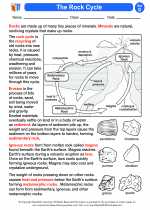
 Worksheet/Answer key
Worksheet/Answer key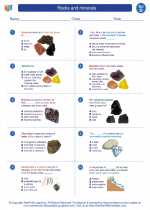
 Worksheet/Answer key
Worksheet/Answer key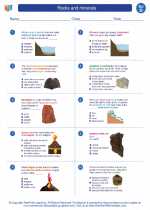
 Worksheet/Answer key
Worksheet/Answer key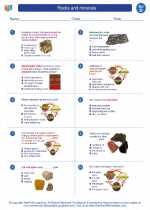
 Worksheet/Answer key
Worksheet/Answer key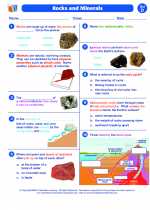
 Vocabulary/Answer key
Vocabulary/Answer key
 Vocabulary/Answer key
Vocabulary/Answer key
 Vocabulary/Answer key
Vocabulary/Answer key
 Vocabulary/Answer key
Vocabulary/Answer key
